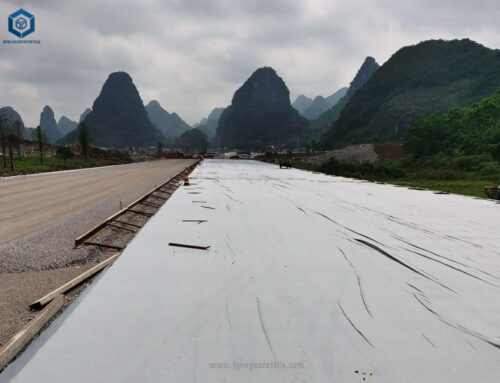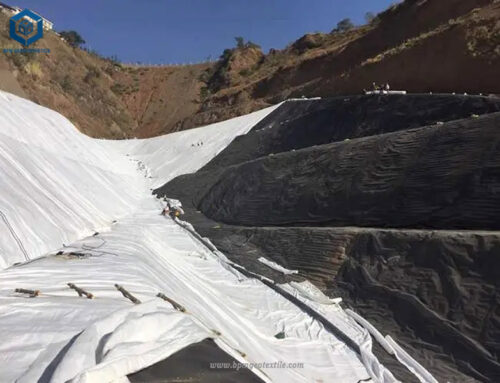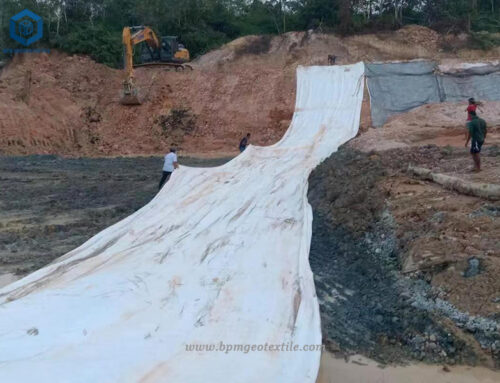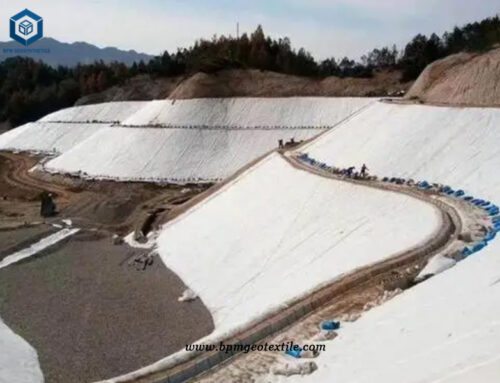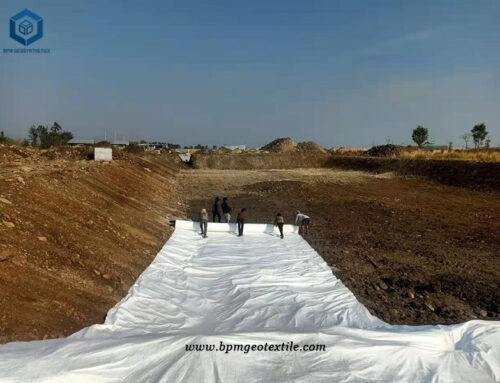Filament ground stabilization fabric, also known as continuous filament geotextile, is the water permeable nonwoven geotextile fabric which is manufactured from the integrated extrusion and consolidation of 100% virgin polyester or polypropylene filaments and is formed by needle punched, thermally bonded processes to form a stable network that retains relational dimensional stability. The continuous filament geotextile has excellent tensile strength, high elongation and perfect uniformity to ensure superior performance, good damage resistance, and excellent filtration properties. The optimized manufacturing process combined with the finest quality virgin material and refined additive stabilizers, Filament ground stabilization fabric has three-dimensional uniformly distributed physical properties in all directions, so it is the ideal geotechnical product for separation and protection applications.
Case study
- Location: Philippines
- Product: Polyester Filament Ground Stabilization Fabric
- Purpose: Highway Construction
Issue
Traffic determines the speed of a country’s logistics and transportation, which in turn determines a country’s economic development. In construction, highway subgrade is one of the important parts of road. As the key link of pavement engineering, it usually needs to bear loads of different weights and needs to have a certain load force. As an important part of the road, the subgrade is the foundation of the pavement structure and bears various loads from the road surface. The construction quality of the roadbed directly affects the quality of the road surface, affects the service life of the entire road surface, and further affects the safety of traffic and people. At the same time, extending the service life of roads is also a very important issue. A client from the Philippines wanted to build a highway that goes from the countryside to the city. Therefore, in the process of road construction, there are high requirements for the tensile strength and bursting strength of the material such as geotextile, and considering the cost, the material also needs to be cost-effective.
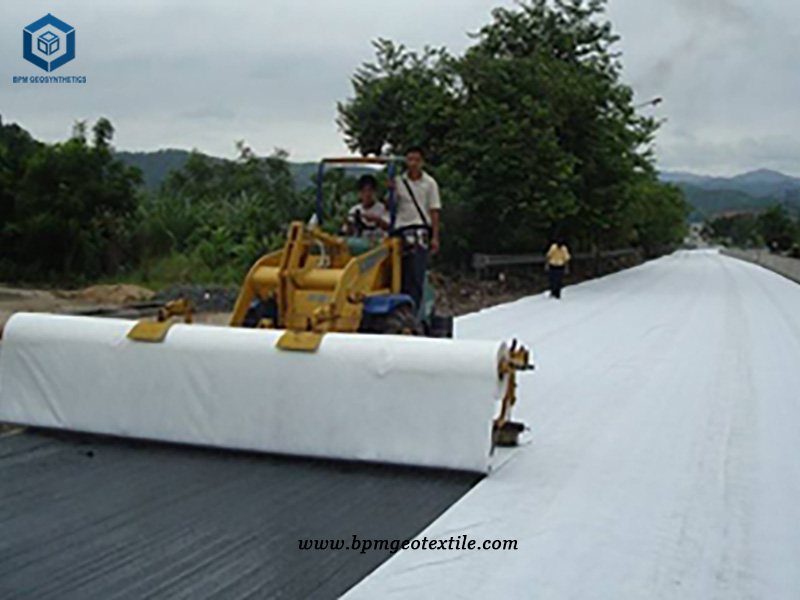
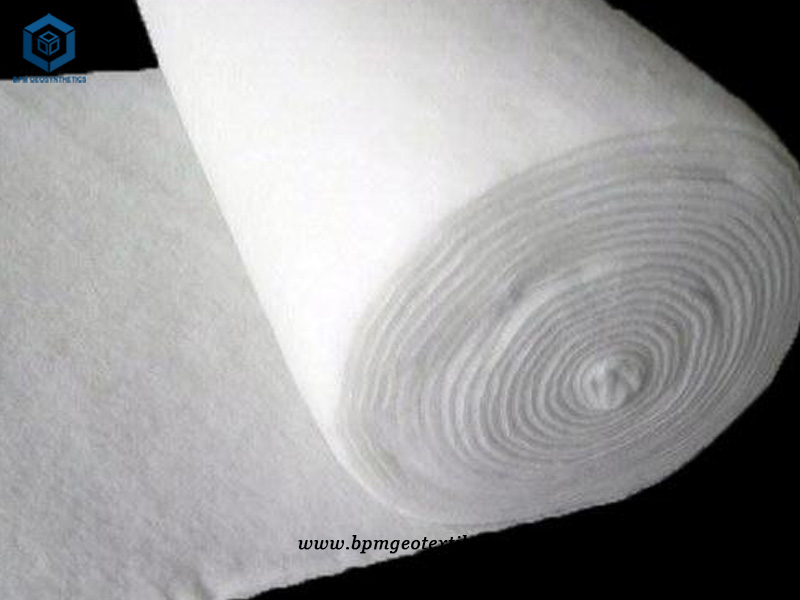
Solution
1) Inspection and product recommendation. After confirming the construction environment with local engineers, BPM recommended 270gsm polyester filament geotextile to the customer.
2) Laying method. Before laying expressway ground stabilization fabric, the smoothness of the working surface should be ensured. Generally pay attention to the following points.
- The seam must intersect the slope line;
- Where there is balance with the slope foot or where there may be stress, the distance between the horizontal joints must be greater than 1.5m;
- On the slope, anchor one end of the geotextile, and then put the coil down on the slope to ensure that the geotextile is kept in a taut state;
- All geotextiles must be held down with sandbags that will be used during layup and retained until the top layer of material is laid.
The method of ground stabilization fabric laying on the highway is as follows.
- Use manual rolling; the ground stabilization fabric surface should be flat, and the deformation allowance should be properly reserved. The installation of filament geotextiles is usually done by overlapping, sewing and welding. The width of stitching and welding is generally more than 0.1m, and the width of lap joint is generally more than 0.2M. Geotextiles that may be exposed for a long time should be welded or sewn.
- Sewing of geotextiles. All stitching needs to be done continuously (for example, point stitching is not allowed). Before overlapping, the geotextile must overlap more than 150mm. Small stitches should be at least 25mm from the selvage (exposed edge of the material); sewn geotextile seams include 1 row of chain stitches with a wired lock. The thread used for sewing should be a resin material with a small tension exceeding 60N, and have chemical resistance and light resistance equivalent to or exceeding that of geotextiles. Appropriate measures must be taken to prevent soil, particulate matter or foreign matter from entering the geotextile layer after installation.
- During the construction, the longitudinal edges of the geotextile are naturally lapped. In the case that the hot-bonded connection cannot be performed in wet (rain and snow) weather, the geotextile should adopt another method—the stitching method, that is, use a special sewing machine for double stitching. The connections are sutured with chemical UV-resistant sutures. The small width is 10cm when sewed, and 20cm when the natural overlap.
- For the stitching, the same quality suture as the geotextile should be used, and the suture should be made of a material with stronger resistance to chemical damage and ultraviolet light irradiation.
- After the geotextile is laid, the geomembrane shall be laid after the approval of the on-site supervision engineer.
Benefit
Polyester filament geotextile is made by the method of polyester filament forming and consolidation. Its fibers are arranged into a three-dimensional structure. It is a new building material in geotechnical engineering and civil engineering applications. In addition to the mechanical strength characteristics such as puncture, it also has good vertical and horizontal drainage performance, good elongation performance, and good chemical functions such as high biological resistance, acid and alkali resistance, and aging resistance. Polyester filament geotextile also has a wide pore size range, tortuous void distribution, good permeability and filtration performance. Light weight, good overall continuity, easy construction, high tensile strength and corrosion resistance.
Specification of Filament Geotextile Ground Stabilization Fabric for Highway Construction in the Philippines
- Total Filament Polyester Geotextile Quantity- 80,000 square meters
- Grams Weight–270gsm
- Each Roll Size–5m*100m
Summary
BPM filament polyester geotextile is the best choice for road construction, especially the good physical and chemical properties of causeway construction provide more guarantee for construction. Laying with 270gsm geotextile can achieve the best input-output ratio. The construction of highways is one of the most common uses of our polyester filament geotextiles. This cooperation with the local project in the Philippines allows us to lay the ground With a deeper understanding of applications, our professional knowledge is constantly improving, and we look forward to cooperating with you all over the world!
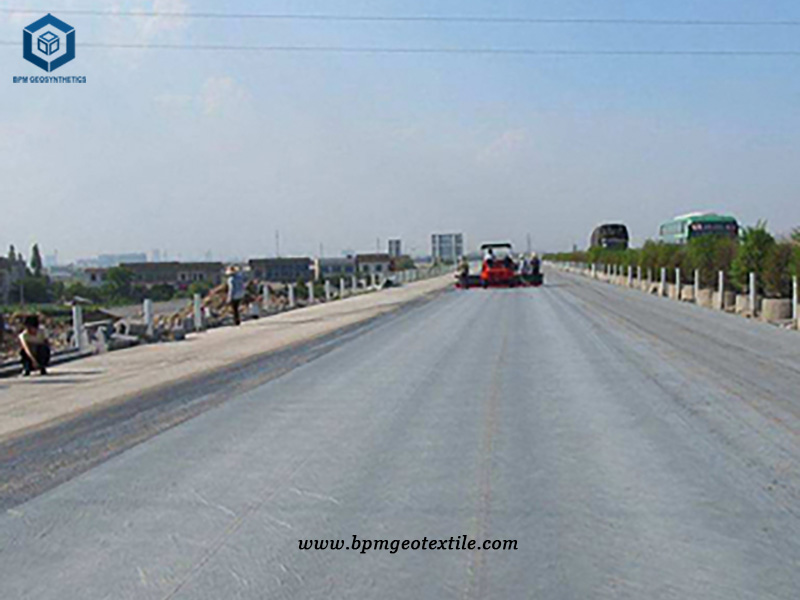
About BPM
BPM manufactures and wholesales many types of effective and states of the art geotextile, geomembrane, and other geosynthetics to over 36 countries. BPM geosynthetic products are widely used across a variety of industries including waste containment, water containment, aquaculture, industrial project, energy project and mining projects, etc. BPM main customers are from Australia, France, Sweden, UK, Hungary, New Zealand, Poland, Mexico, Ecuador, Brazil, Pakistan, Bangladesh, Thailand, Vietnam, Malaysia, Indonesia, Singapore, Philippines, Sri Lanka, India, UAE, Saudi Arabia, Qatar, Kenya, etc.
BPM is not only manufacturing best quality geosynthetic products but also providing professional design and installation service. OEM, ODM, custom development and fabrication are also available. If you have any questions or inquiries, please fill and submit the following form, we will reply as soon as possible.

